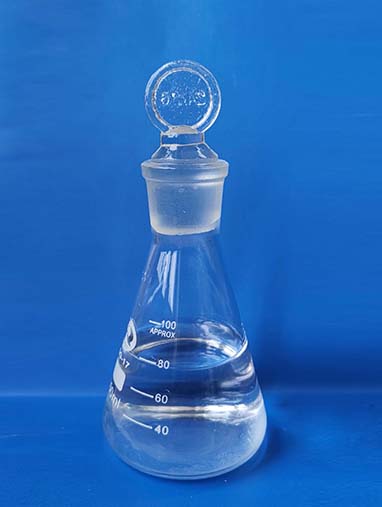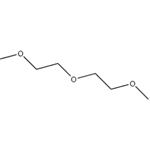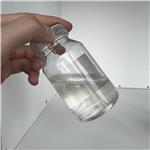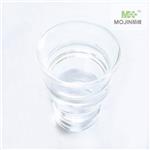The role of diethylene glycol dimethy in chemical production
Mar 31,2022
Background
Diethylene glycol dimethyl ether (DMDE for short) is a colorless neutral liquid with ether odor[1], boiling point 162 ℃, relative density 0.9467, refractive index 1. 4097, stable chemical properties, not easy to occur chemical reaction; can dissolve various resins and cellulose, and can be miscible with water and many organic solvents such as alcohols, ethers, ketones, esters, hydrocarbons and chlorinated hydrocarbons in any proportion, its solubility can be adjusted by appropriate dilution with water or some solvents. DMDE has a variety of uses in organic synthesis, as an alkali metal hydroxide solvent in the synthesis of metal organic compounds, alkylation reactions, polycondensation reactions and reduction reactions.

Picture 1 Diethylene glycol dimethyl ether liquid
For the preparation of organometallic compounds and hydrides
DMDE is an inert protective solvent for the preparation and storage of metal organic compounds, and can be used to produce various metal compounds such as: synthesis of bis(diglyme) sodium hexahydroxyniobium, bis(diglyme) sodium hexahydroxyvanadium and phenylbutylamine selenium, used as synthetic reagents. Production of double metal cyanide Zn3[Ir(CN)6]2·(H2O)mLm(L=DMDE), used as the polymerization catalyst of propylene oxide polyol. DMDE is also used as a catalyst for the reaction of methyl chloride and sodium-lead alloys, as a solvent for the preparation of high-concentration metal oxides Ba (OCHM e2) 2 and Na Al H4, the former used in the preparation of ceramic coatings on electronic device laminate capacitors , the latter is used as a strong reducing agent.
For the preparation of boron and silicide
As an inert solvent, DMD E can be used to prepare boranes, borohydrides, polyborohydrides and other borides. For example, NaBH4, KBH4 and Mg(BH4)2 can be obtained by reacting NaH, KH or MgH2 with B2H6 in DMDE. NaBH4 and Me2NHC l were reacted in DMDE to obtain Me2NBH2 which was used as a reducing agent for electroless nickel plating. The tetraalkoxy silicon can be prepared by the reaction of silicon and alcohol in DMDE with the metal compound of alcohol as the catalyst. The typical reaction process is as follows: 2 . 3 kg Si, 9 kg DMDE and 0 . 49kg Si (OMe) 4 was added to the reactor and the temperature was raised to 125 ℃, and then 22% NaO Me 3 was added. 2 kg , then at 4 5 . 9h respectively with O. Si and MeOH were continuously added at 534 kg/h and 4.06 kg/h to obtain 126 kg of Si(OMe)4 with a yield of 87% based on silicon.
Solvents and datalysts for polymerization
DMDE can be used in the polymerization of ethylene, propylene, butadiene, styrene, acrylate, vinyl alcohol and amide to obtain functional or composite high molecular polymers with excellent performance. For example, the selectivity for the 12-position of the butadiene polymerization product is 95%. DMDE and trimethyl phosphate are used as diisocyanate polymerization solvents, which can be stored for a long time; in DMDE solution, diisocyanate and diol react to form a non-porous polyurethane film with good adhesion strength. For example, 39. 7 parts of butanediol was slowly added to 350 parts of dissolved 110 . In 3 parts of MDI and DMDE, an adiabatic reaction was carried out at 80 °C, the mixture was kept at 130 °C for 5 h, and a solution of polyurethane with a relative molecular mass of 35000 was prepared and applied to a copper plate to form a non-porous CJIS ( 3003) film. Urea in DMD E heating reaction can be obtained 9 6 . 8% pure cyanuric acid, the yield reaches 80%; polyparaphenylene can be prepared by using DMDE as solvent lithium methoxyl and propoxide titanium as catalyst, which has good conductivity; aromatic in DMDE and alcohol co-solvent A one-step reaction of dianhydride and aromatic diamine is carried out to prepare polyamic acid.
Reference
1 Zhu Xinbao, Wang Fuquan. Synthesis and application of diethylene glycol dimethyl ether [J]. Jiangsu Chemical Industry, 2001(04):38-41.
- Related articles
- Related Qustion
- Uses of Bis (2-methoxyethyl) ether Nov 25, 2021
Bis (2-methoxyethyl) ether, also known as diglyme, is a linear aliphatic diether widely used as a solvent and present as a clear liquid at room temperature with a mild ether odor. The compound is notknown to occur in nature. It is synthesiz
Triethyl orthoformate, also known as triethoxymethane, 1,1',1'' (methine tri(oxo)) triethane, is an organic substance with the chemical formula C7H16O3....
Mar 31,2022APIP-Nitrobenzoic acid is an intermediate in organic synthesis of medicines, dyes, veterinary drugs, and photosensitive materials.....
Mar 31,2022APIDiglyme
111-96-6You may like
- DIETHYLENE GLYCOL DIMETHYL ETHER
-

- $0.00 / 190kg
- 2024-03-27
- CAS:111-96-6
- Min. Order: 190kg
- Purity: 99.5%MIN
- Supply Ability: 3500tons
- Diethylene Glycol Dimethyl Ether
-

- $100.00 / 1bag
- 2023-08-31
- CAS:111-96-6
- Min. Order: 1bag
- Purity: 99
- Supply Ability: 5000
- Diethylene Glycol Dimethyl Ether
-

- $0.00 / 25KG
- 2023-07-26
- CAS:111-96-6
- Min. Order: 1KG
- Purity: 99%
- Supply Ability: 50000KG/month




